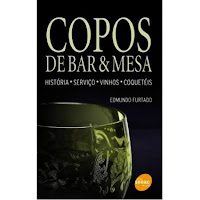In my previous posts about
feijoada, I mentioned that this meal contains numerous possible additions, modifications, substitutions and deletions. Consequently, there is no single definitive recipe for
feijoada. Cookbooks and food magazines, Brazilian and foreign, newspapers and the internet offer up thousands of recipes for making this dish.
I'll post a few
feijoada recipes here in Flavors of Brazil, but I thought it would be proper to start out with a very traditional recipe from 's Rio de Janeiro . As it's from Rio de Janeiro, it is called "
Feijoada Carioca" in Portuguese.
Carioca is a Portuguese word that means someone or something that is from Rio de Janeiro. Although
feijoada is enjoyed everywhere in Brazil, it is most closely associated geographically with Rio de Janeiro.
This recipe is for a very traditional
feijoada, and I'm posting it, even though not all the ingredients are likely to be available outside of Brazil, as illustrative of a classic
feijoada. Fortunately,
feijoada is infinitely flexible, and can be altered to suit taste, budget and availability, so don't hesitate to try this recipe even if you can't find everything that's in the list of ingredients. Just improvise!
You'll note that this recipe is high in saturated animal fats, and it is consequently highly caloric and probably not the most healthy recipe from Brazil. However, the final product is quite rich and most people do not eat a large quantity at one time, nor is feijoada eaten frequently. Just like the Thanksgiving Turkey Dinner, this is a meal for special event or celebration, and as such, rules of healthy nutrition go out the window.
______________________________________________________
RECIPE - Feijoada (Classic, Traditional Recipe)
Serves 6
1/2 lb. (250 gr.) pork ribs, salted
1/2 lb. (250 gr.) pig's tail, salted
1/2 lb. (250 gr.) pig's foot, salted
1/2 lb. (250 gr.) pig's ear, salted
1/2 lb. (250 gr.) pork loin, salted
1/2 lb. (250 gr.)
carne-do-sol (click
here for instructions on how to make your own
carne-do-sol)
1/2 lb. (250 gr.) beef brisket
1/2 lb. (250 gr.) Linguiça sausage
, or other smoked sausage
1/2 lb. (250 gr.) Linguiça sausage, spiced, or pepperoni
1/2 lb. (250 gr.) Kielbasa sausage, or other garlic sausage
1 1/2 cups dried black beans
1 bunch cilantro
1 bunch green onions
5 bay leaves
1/2 cup cachaça
1 unpeeled orange, scrubbed and quartered
1 lb. (400 gr.) pork lard
1/2 lb. (250 gr.) thick sliced smoked bacon, cubed
4 cloves garlic, chopped
1 medium onion, chopped
-----------------------------------------------------------------------
The day before cooking the feijoada, place all the salted,meats in a large pan, and cover with cold water. Refrigerate. Change the water every three hours, for minimum 24 hours. Drain thoroughly.
In a very large kettle or bean pot, place the beans, the meats and sausages, the cilantro and green onions tied together, the bay leaves, the cachaça, and the orange. Cover with cold water, bring to a boil over medium heat. Continue to cook over low heat. As each meat in turn becomes fully cooked and tender (test with a fork) remove from the kettle, let cool, cut into bit-size pieces, and reserve.
When the black beans are fully cooked and soft (about 1.5 - 2 hrs.), remove 1 cup of beans and cooking liquid, and blend until smooth in a blender. Return 1/2 cup of this mixture to the beans in the kettle to thicken the cooking liquid.
In a large frying pan heat the lard, and cook the bacon in it until browned and crispy. Remove the bacon cubes, and in the same lard, fry the garlic and onion until soft and transparent, but not browned. Remove from heat, then stir in the reserved 1/2 cup of the blended beans. Stir entire contents of frying pan plus the reserved meats and bacon, into the beans in the kettle. Let cook over low heat for 20 minutes for flavors to blend.
Serve accompanied by Mineiro-style kale, thick slices of peeled oranges, white rice, farofa (recipe to follow), and caipirinhas to drink.
 Once I started living here in Brazil, and shopping at the local supermarket every week, I noticed a product on the shelves called "marmelada". When I gave it a good look, however, it seemed to have nothing to do with what we call marmalade, other than seeming to be made from some sort of fruit, and being sweet. It was a dark red, thick and consistent paste which could be cut into slices or chunks. If any readers are familiar with "guayabada" the Mexican and Caribbean guava paste, they will know what marmelada is like - it's very similar in appearance. Naturally, I bought some, and it was delicious, very fruity and not too sweet. The fruit taste was definitely familiar but I could not place it immediately.
Once I started living here in Brazil, and shopping at the local supermarket every week, I noticed a product on the shelves called "marmelada". When I gave it a good look, however, it seemed to have nothing to do with what we call marmalade, other than seeming to be made from some sort of fruit, and being sweet. It was a dark red, thick and consistent paste which could be cut into slices or chunks. If any readers are familiar with "guayabada" the Mexican and Caribbean guava paste, they will know what marmelada is like - it's very similar in appearance. Naturally, I bought some, and it was delicious, very fruity and not too sweet. The fruit taste was definitely familiar but I could not place it immediately.
















































